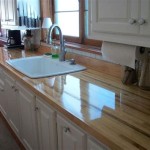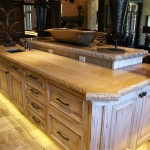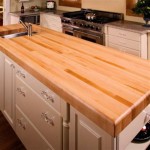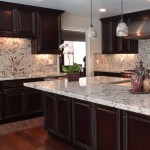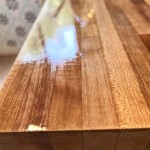How To Make Butcher Block Countertops
Butcher block countertops bring a warmth and richness to any kitchen. They are durable and easy to care for, and they can be customized to fit any space. If you are looking for a way to add a touch of rustic charm to your kitchen, butcher block countertops are the perfect choice.
Making butcher block countertops is a relatively easy process that can be completed in a weekend. The most important thing is to choose the right wood and to follow the instructions carefully. With a little bit of time and effort, you can create a beautiful and durable butcher block countertop that will last for years to come.
### Materials Needed: - Butcher block slabs - Wood glue - Clamps - Sandpaper - Oil finish - Applicator ### Instructions: 1.Prepare the wood.
The first step is to prepare the wood. This involves cutting the slabs to the desired size and shape, and then sanding them smooth. It is important to use a fine-grit sandpaper so that the surface is smooth and free of splinters. 2.Glue the slabs together.
Once the slabs are prepared, they need to be glued together. Apply a generous amount of wood glue to the edges of the slabs, and then clamp them together. Make sure to use enough clamps so that the slabs are held securely together. 3.Let the glue dry.
Allow the glue to dry for at least 24 hours. Once the glue is dry, the countertops can be installed. 4.Install the countertops.
The countertops can be installed using a variety of methods. The most common method is to use screws to attach the countertops to the cabinets. 5.Sand and finish the countertops.
Once the countertops are installed, they need to be sanded and finished. Sand the countertops with a fine-grit sandpaper, and then apply an oil finish. The oil finish will help to protect the countertops from moisture and wear. 6.Enjoy your new butcher block countertops!
Butcher block countertops are a beautiful and durable addition to any kitchen. With a little bit of care and maintenance, they will last for many years to come. ### Tips: - Use a hard wood, such as maple or oak, for your butcher block countertops. Hardwoods are more durable and less likely to warp or crack. - Make sure to seal the countertops with a food-safe oil finish. This will help to protect the countertops from moisture and wear. - Clean the countertops regularly with a mild soap and water solution. Do not use harsh chemicals or abrasive cleaners, as these can damage the finish. - Butcher block countertops can be refinished if they become damaged. Simply sand the countertops with a fine-grit sandpaper, and then apply a new coat of oil finish.
How To Build Your Own Butcher Block Addicted 2 Diy

How To Make A Custom Butcher Block Countertop From Scratch

How To Make Diy Butcher Block Countertop Our Handcrafted Life

How To Build Your Own Butcher Block Addicted 2 Diy

How To Make A Butcher Block Countertop Food Safe Hardwood Reflections

How To Make A Custom Butcher Block Countertop From Scratch

Painted Furniture Ideas 9 Steps To Diy Butcher Block Countertop

Custom Diy Butcher Block Island Top House By The Bay Design

Tips For Diy Live Edge Countertop Projects Hardwood Reflections

Butcher Block Countertops Pros And Cons To Consider Before Installation
See Also

